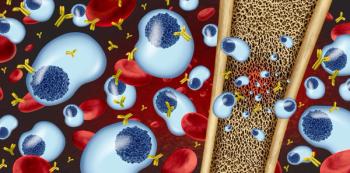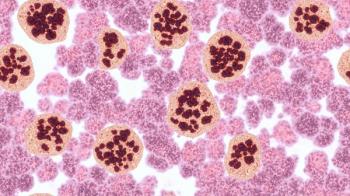
An Overview of Specialty Pharmacy in Health-Systems
The evolving landscape of specialty pharmacy growth represents the impact it may have on the operations of the health-system moving forward.
Specialty pharmacies provide unique resources to patients, providers, and caregivers in the outpatient setting. Services are tailored to optimize the patient journey and can be customized by pharmaceutical manufacturers in some cases.
This is important because specialty medications tend to be expensive and require initiation by a physician specialist who can provide close oversight and monitoring of the patient. Some specialty drugs necessitate administration by a health professional or have specific handling requirements that cannot be managed by a standard outpatient, community pharmacy.
Furthermore, specialty pharmacy is a rapidly growing market, with approximately 50% of FDA-approved therapies in 2018 and 2019 considered to be specialty medications.1 While community specialty pharmacies have capitalized on the nuances of specialty medication handling, dispensing, and follow-up, many health-systems have begun to offer specialty pharmacy services within their institution as an integrated program. The advantages of this development are innumerable but are initially thought to improve patient and provider satisfaction and convenience, optimize patient outcomes, and create a new source of revenue for the health-system.
To provide a numerical landscape of specialty pharmacies in health systems, in 2019, 26.4% of health-system leaders reported specialty pharmacies were included in their operations, up from 7.8% in 2015.2 This increase also aligns with the specialty drug expenditure increase by 8.4% in 2020 for an estimated $265.3 billion total in the Unites States alone.2
In 2020, an ASHP survey reported characteristics of 122 health-system specialty pharmacies and found that approximately half (47.5%) had a specialty pharmacy location separate from their retail pharmacy operations, and a majority had offered specialty pharmacy services for less than 7 years.2 While 86.8% of respondents reported dispensing non-specialty medications in addition to specialty medications, gross revenue ranged widely from <$50 million (55% of respondents) to >$400 million (2.7% of respondents).2
Of note, 4 out of 5 health-system specialty pharmacies were accredited, an overwhelming majority by URAC (71.9%).2 The evolving landscape of specialty pharmacy growth represents the impact it may have on the operations of the health-system moving forward.
From a provider-satisfaction perspective, health-system specialty pharmacy is moving in a positive direction, because clinical data and documentation are consistently visible across care platforms. Everything documented by a physician during an admission, clinic visit, or other encounter can be viewed by other clinicians.
Not only can health-system pharmacists from both the inpatient and outpatient sides view patient-specific information to verify prescription accuracy prior to dispensing, but also nurse coordinators and case managers who may be assisting with insurance coverage or patient assistance programs can see the same data. Optimizing visibility allows for clinicians to avoid duplication of efforts and ensure safety and efficacy with full laboratory data and other relevant information (i.e., allergies, medication history, etc) easily available.
When information is streamlined efficiently, patients can initiate therapy in a timely fashion because the back-and-forth communication required by separate institutions is avoided. When independent specialty pharmacies are missing a test, or other required information, for dispensing a specialty drug, they must reach out to the provider (or representative of the provider) and await updated testing results to be submitted. In the setting of a health-system, such results may be readily available and remove the game of telephone. By reducing provider burden and enhancing the workflow, providers become increasingly satisfied with specialty pharmacy services.1
As the United States moves toward a value-based care model, providers and physician groups are incentivized to improve communication and increase medication access. When patients are more easily able to obtain drugs and be initiated on therapy more quickly, they are likely to have better outcomes.
They are less frustrated, angry, and bothered by the convoluted process of prior authorizations, override requests, and shockingly high co-pays. Integrated health-system specialty pharmacies are well-positioned to aid patients directly from their clinic/provider visit in acquisition of new or continued therapy.
Additionally, the providers, pharmacists, and support staff are familiar with one another and the streamlined process, which therefore, improves communication. The threat of reduced reimbursement for poor patient outcomes may be tied to patient adherence and drug efficacy. Therefore, it is in the health-systems’ best interest to keep close tabs on patients starting specialty drug therapy.
As part of the enhanced communication and access provided by health-system specialty pharmacy services, patient adherence rates are improved. This was demonstrated by McCabe and colleagues in 2020 by reviewing the medication possession ratio for patients who received oral anticancer therapy via an internal health-system specialty pharmacy or an external specialty pharmacy.
Data were collected from prescription claim information.3 The medication possession ratio (MPR) is the ratio of the duration of therapy for each medication (the day’s supply dispensed) to the days of possession of medication (captured using refill or prescription data).
The MPR is generally on a scale of 0 to 1, with 1 indicating 100% adherence. However, adherence can be greater than 100% if prescriptions are refilled early when patients are overusing a prescription medication. The MPR benchmark is >80% for most conditions, although some would argue that higher adherence is necessary for anticancer therapies to be effective.
In this report, the patients who filled their oral anticancer medication at the internal specialty pharmacy had significantly better MPR than those who filled externally, 1 vs 0.75 (p < 0.001), respectively.3 There was no significant difference between groups for time to treatment. Similar studies need to be conducted to confirm these results before they can be extrapolated to broader populations, but it provides unique insight to the value of integrated, internal health-system pharmacies.
While there are many advantages to health-system specialty pharmacies, there are disadvantages worth noting as limitations of this review. Firstly, the services offered by various specialty pharmacies across a multitude of health-systems, states, and practices are likely not consistent.
Although there are standards set in place by accrediting bodies, the patient journey and other factors are still considered to be exploratory measures. Second, much of the data reported in the literature regarding satisfaction and time to outcomes are self-reported via national surveys.
Data should be interpreted with caution with the understanding that some results may reflect reporting, observation, and/or confirmation biases. Lastly, it can be difficult to accurately determine patient adherence through claims records due to patients changing therapy, hospitalizations leading to reduced refill frequency, and day-to-day accuracy of the time patients actually take their medications at home.
In conclusion, the advantages to health-system specialty pharmacy include new streams of revenue through a growing market of specialty drugs, increased provider satisfaction, and improved patient outcomes in support of a value-based care model. There are challenges to overcome across all aspects of this model, and data should be taken with a grain of salt.
However, there is great potential for health-system specialty pharmacies to overwhelm the specialty pharmacy industry. Hospitals and hospital groups should take advantage of the potential opportunity associated with highly efficient, successful health-system specialty pharmacies.
About the Author
Mackenzie Goltz (Magid), PharmD, BCPS, earned her Doctor of Pharmacy degree from The University of Kansas and her Master of Pharmacy Business Administration (MPBA) degree at the University of Pittsburgh School of Pharmacy/Joseph M. Katz Graduate School of Business, a 12-month, executive-style graduate education program designed for working professionals striving to be tomorrow’s leaders in the business of medicines. Mackenzie completed a PGY1 Pharmacy Residency and PGY2 Solid Organ Transplant Pharmacy Residency at Duke University Hospital, where she currently practices as a clinical pharmacist.
References
- Rebekah H Anguiano, PharmD, BCPS, BCACP, Autumn D Zuckerman, PharmD, BCPS, AAHIVP, CSP, Elizabeth Hall, PharmD, Erica Diamantides, PharmD, MHA, BCPS, Lisa Kumor, PharmD, BCACP, Deborah L Duckworth, PharmD, CSP, Megan Peter, PhD, Patrick J Sorgen, PharmD, CSP, Amy Nathanson, PharmD, BCACP, Huda-Marie Kandah, PharmD, BCPS, CSP, Jillian Dura, PharmD, Udobi Campbell, PharmD, MBA, Comparison of provider satisfaction with specialty pharmacy services in integrated health-system and external practice models: A multisite survey, American Journal of Health-System Pharmacy, Volume 78, Issue 11, 1 June 2021, Pages 962-971,
https://doi.org/10.1093/ajhp/zxab079 - JoAnn Stubbings, BSPharm, MHCA, Craig A Pedersen, BSPharm, PhD, FAPhA, FASHP, Karly Low, PharmD, David Chen, BSPharm, MBA, ASHP National Survey of Health-System Specialty Pharmacy Practice—2020, American Journal of Health-System Pharmacy, Volume 78, Issue 19, 1 October 2021, Pages 1765-1791,
https://doi.org/10.1093/ajhp/zxab277 - Colleen C McCabe, PharmD, Meagan S Barbee, PharmD, BCOP, Marley L Watson, PharmD, BCOP, Alyssa Billmeyer, PharmD, MHA, Collin E Lee, PharmD, BCPS, Manali Rupji, MS, Zhengjia Chen, PhD, Ryan Haumschild, PharmD, MS, MBA, Bassel El-Rayes, MD, Comparison of rates of adherence to oral chemotherapy medications filled through an internal health-system specialty pharmacy vs external specialty pharmacies, American Journal of Health-System Pharmacy, Volume 77, Issue 14, 15 July 2020, Pages 1118–1127,
https://doi.org/10.1093/ajhp/zxaa135
Newsletter
Stay informed on drug updates, treatment guidelines, and pharmacy practice trends—subscribe to Pharmacy Times for weekly clinical insights.



















































































































































































































